
Coincidence is an amazing fact of life. It happens unexpectedly and is always surprising though it’s not necessarily of any significance. Sometimes it’s just interesting. Such was the case with the origin of board #7.
I’ve been waiting for a board like this one. A surfboard that’s retro but has modern characteristics such as in the nose and tail rocker, V bottom contour and light weight construction. And a black and white print that’s indicative of earlier times in photography.
The first six surfboards in my surfboard art project were more modern by the simple fact that they incorporated two, three or four fins (twin fin, thruster and quad respectively). Missing was a single fin, which in all but the earliest days of surfing when boards had no fins, was the standard steering mechanism of surfboards. Then one day while looking through my files of surfing photographs I came across a photo of a surfer by the name of Joel Tudor riding a round nose, round tail, single fin board at Pipeline. Looking closely at the image I knew this was the board style I was looking to add to the collection.
In researching surfboards and board shapers I came across B.A.T. Surfboards. The boards looked clean and the company had a strong reputation for quality. I also learned that the shaper was someone with lots of experience in the water and in the shaping room. I contacted them and received a reply that they’d be interested in working with me. When I finally spoke on the phone with the shaper it turns out his name is Brian Tudor! And now you know the coincidental part of the story. (By the way, there is no relation between the two.)

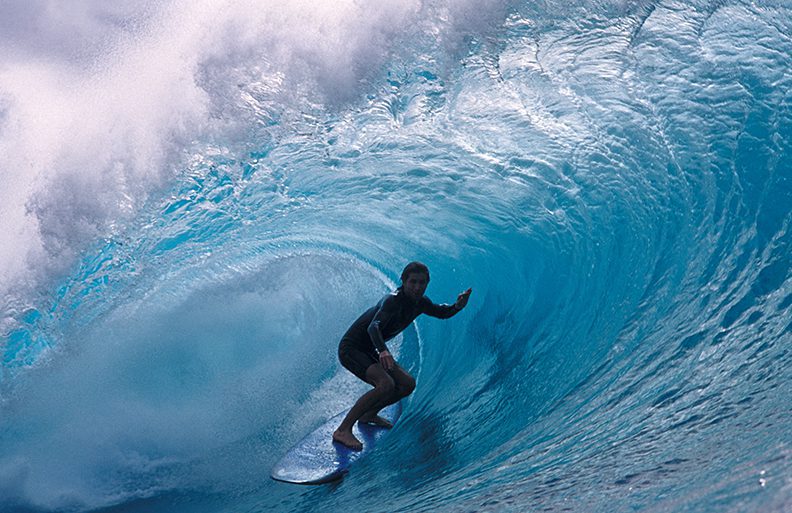
While a soft line, curvy board is not what Brian normally shapes, it is a style that he felt comfortable in putting his label and signature on. We weren’t necessarily replicating Joel Tudor’s Pipeline board as we wanted to keep a wider outline especially in the tail area. This board would be more suitable for a clean, five foot point break were you can carve long flowing turns and go for some easy cruising.
Once again I was privileged to work with a highly skilled and innovative craftsman. Brian keeps the cleanest and most organized shaping room of any the shapers I’ve worked with and this I believe helps keep his thoughts organized and to the point at hand. There is no hurry in his work and he pays close attention to details. In the glassing room barely a drop of resin goes wasted.
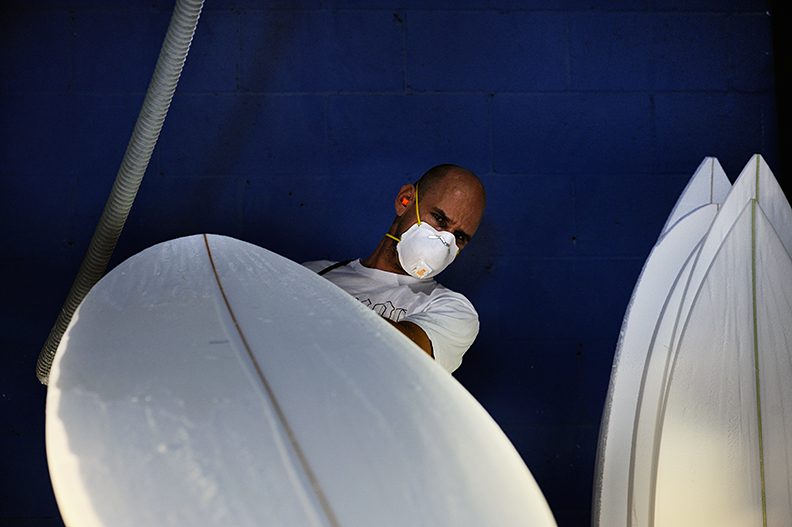
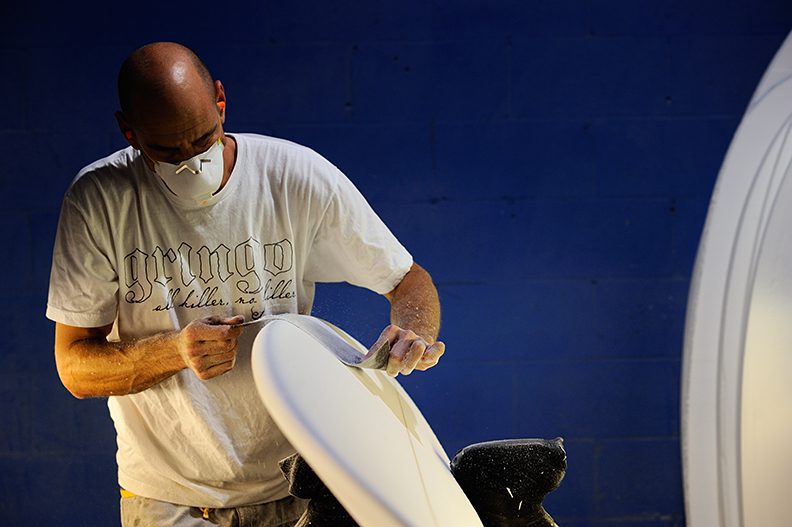
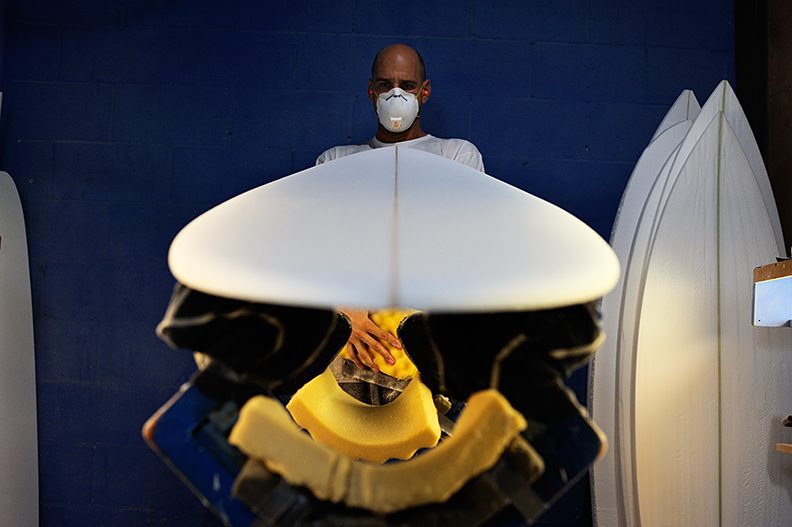
Unique to this board, at least up to this point, is a foam tint. Knowing we were going to go with a black and white image Brian suggested a gray tint on the foam on the opposite side of the print and on the rails in combination with a black pin line around the border of the print. We both agreed this would be stylish and classy and fit the nature of the retro design.
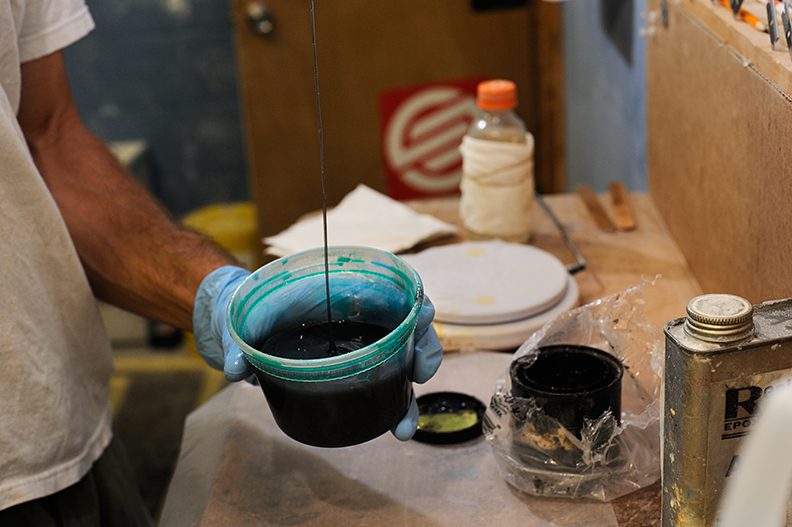
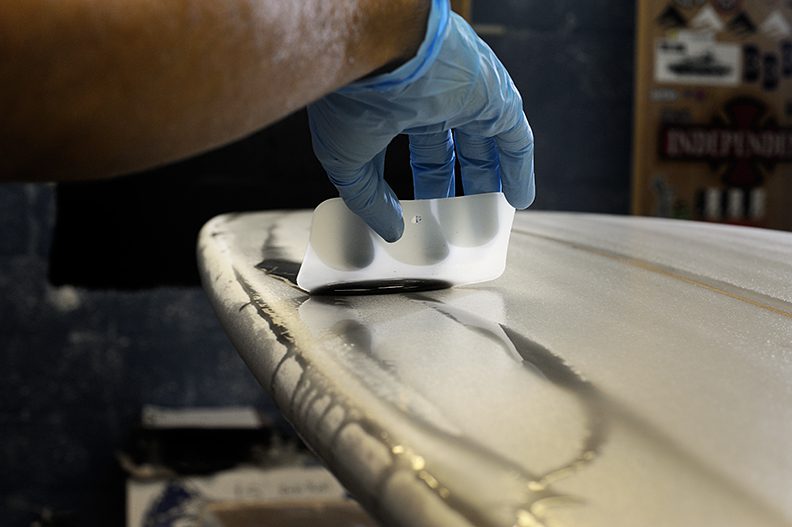

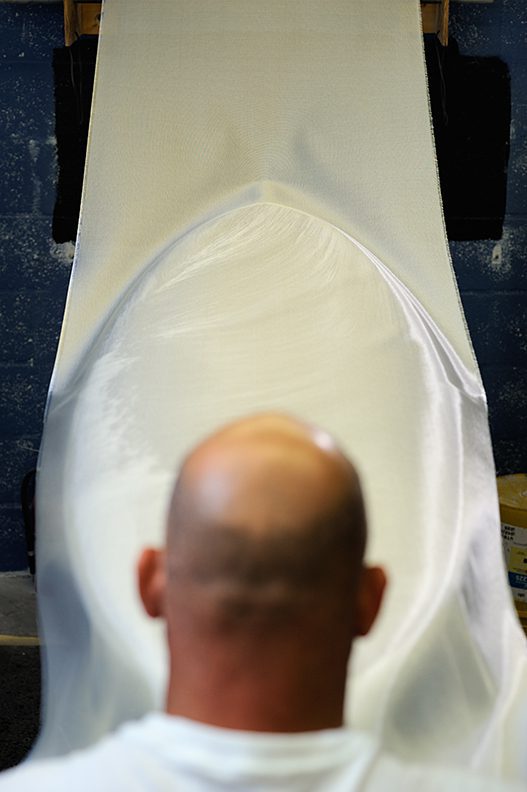

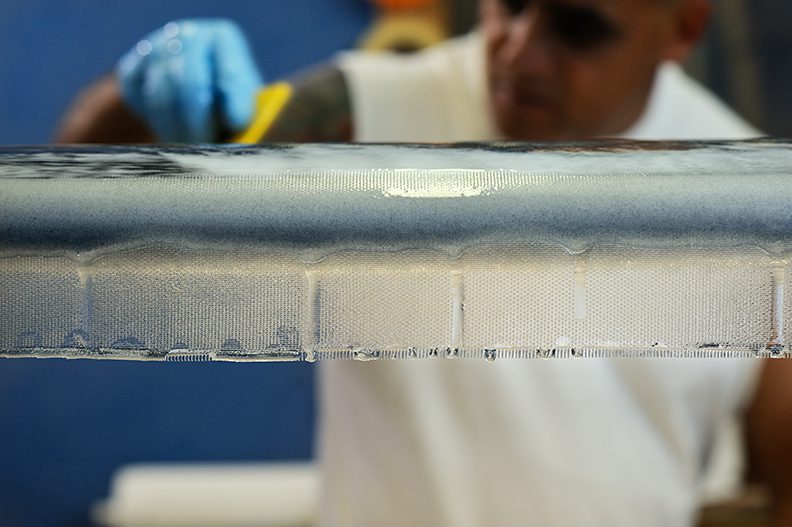
Deciding on an image was not easy. I had in mind a photograph of rounded black stones on a beach in the South Island of New Zealand and Brian was keen on using a wave image. In the end the lines of the wave fit the curves of the board and we went with a ‘wave on a board’ (as opposed to a board on a wave). The photograph was captured digitally and converted to black and white before printing. I am extremely proud of “Down The Line” and as with the prior six boards it pays homage to the craftsmanship of the hand shaper.
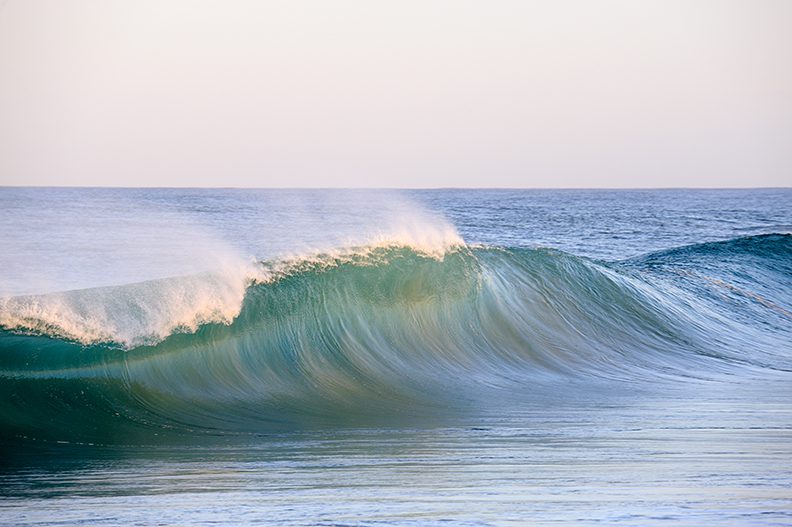
I’m almost at the half way point of the 15 Boards/15 Shapers project, the next board will put me on the downward slope. Its slow going but then again nothing here is pre-determined, ready made or constructed overnight. I have to travel far to meet with shapers. The collaboration on board style, image selection and finishing touches takes thought and time. A print has to be made to the specific dimensions of a board, after the board has been shaped. Pictures of the process and portraits of the shapers have to be taken. The end results are worth the effort and I’m thankful to be involved in such a collaborative, artistic endeavor.
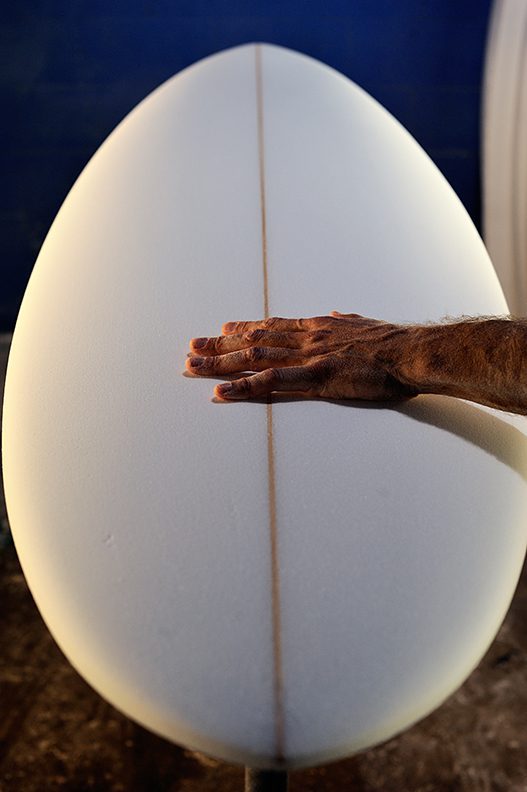
…alright, my time has finally come…I have wanted your images in large format for over 11 years…but never turned in my “freebie” coins. Now I feel this is time to turn in my “coins”—not for a freebie! But for a REALLY good deal on a basic cool old school long board (wanting to teach both my kids on it!) that has one of your “classic” wave, surf, fish images on it! I am NOT asking for anything free…just a friends & really cool friends rate;) Hit me up with some ideas and prices and let me see what kind of… Read more »